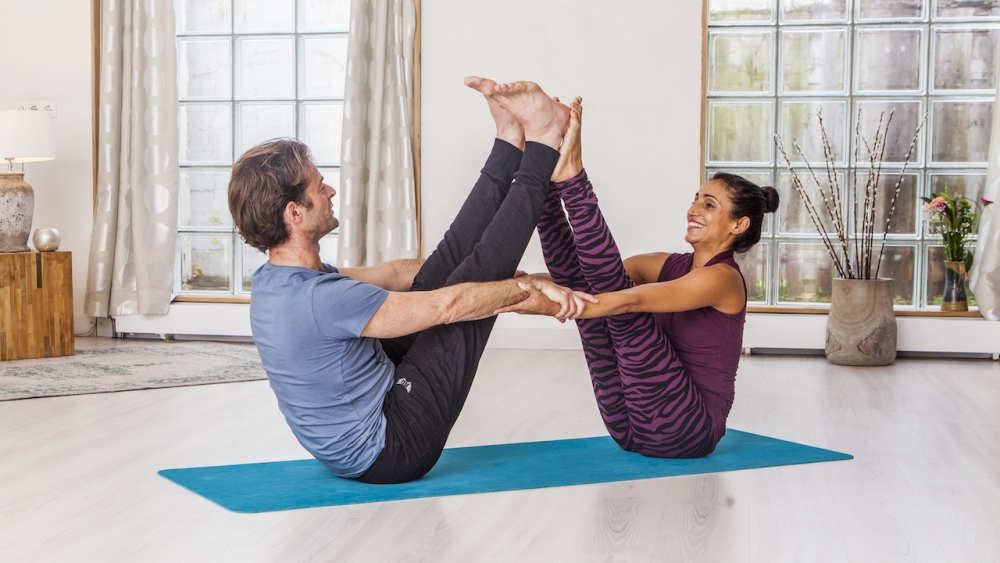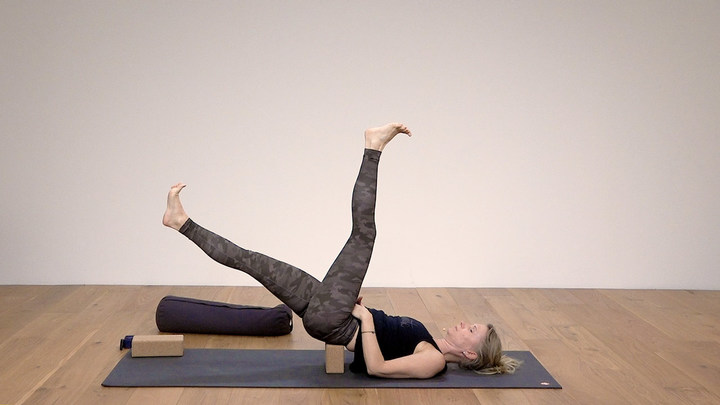1. Revisit your intention
Ask yourself why you practise yoga? Maybe it’s helpful to try and remember what brought you to it in the first place. Has that motivation changed or evolved? What does yoga give you that other sports or movement practices don’t? How could what you do on the mat better reflect that?
Writing down the answers to these questions may help you to clarify your individual Sankalpa (intention). You could even write down a specific word or short sentence and place it near your mat to help you keep your intention in mind.
2. Change where you practise
Much has been written about the psychology of sitting in the same place. In class I habitually sat in the bottom left hand corner of the room. When, one day, I was forced to move my mat because someone else was sitting there (how dare they!), suddenly I was much more aware of other people around me. Balances became wobbly, my gaze began to wander, my ‘brain chatter’ was louder…In other words, my internal focus had to work much harder to counteract the distraction of the ‘new’.
So, if space allows, move your mat to a different room, practise near a window, go outside. If you can’t move your mat just try facing in the opposite direction. The external view may just refresh the internal focus.
3. Try something new
Any long term relationship can have its ups and down. Our relationship with yoga is no exception. It can be easy to take our practice (and our bodies) for granted and for what we do on the mat to become habitual, rather than mindful.
If you find yourself returning to the same teachers and classes (if you practise online), or the same sequence and poses if you have a self-guided practice, try something new. If you always do online yoga, go to a studio or workshop and get inspired. Once a week, perhaps decide to try a class by a different teacher, or a new style.. or even try a self-guided practice…What have you got to lose?
4. Change when you practise
If you’re a regular practitioner, you’ve probably got a particular time of day you prefer to get on the mat. If your schedule allows, why not try changing the time of day you practise – morning to evening, vice versa or a quick lunch break class? Stepping on your mat at different times of the day helps you become more aware of what kind of practice best suits you when, and how this can affect your physical and mental wellbeing.
5. Put on some music
Music can bring a different dimension to your yoga practice. It can act as a calm ‘backdrop’, helping to soothe a chattering mind. On the other hand, you may find that it actually informs your practice and you get so lost in the music that your body, rather than your mind begins to lead the way. (Of course, it does depend on what you choose to listen to – Rage Against the Machine is likely to evoke a different kind of energy than Ludovico Einaudi, for instance!) If you’re struggling to find suitable soundtracks, try some of our music flow classes or try Spotify – there are hundreds of yoga playlists to choose from.
6. Adopt a ‘beginner’s mindset’
“In the beginner’s mind there are many possibilities, in the expert’s there are few.” This quote by Shunryu Suzuki-roshi identifies one of the downsides about becoming ‘good’ at something – once we think we ‘know’ something, there’s a tendency to stop exploring, stop listening, stop enquiring…
Stay curious, practise something you’re not ‘good’ at or familiar with, or try a different movement practice altogether, like Tai chi, Qi gong or a dance class. What about a mixed-movement class, which combines yoga with other movement practices? Not only will this expand your horizons and open you up to potentially new and exciting opportunities but trying something new is healthy for our brains too – building connections between neurons and replacing those we’ve lost.
7. Redefine what you think of as ‘yoga practice’
Acknowledge and be proud of the commitment and dedication it takes to get on your mat but know that a yoga ‘practice’ doesn’t have to be a ball-busting, 1.5 hour session. A few minutes of mindful movement, quiet meditation or just a moment or two tuning into your breath may serve your body and mind much more than forcing yourself to go through the motions. To paraphrase Julie Martin, the practise really begins when you step off your mat.
8. Read something inspiring
Whenever my practice wanes, I pick up a book. Whether you’re interested in anatomy, philosophy, history, spirituality, poetry, fiction, there are thousands to choose from. If you need some inspiration, our very own teachers have selected a few of their favourite yoga books here.
…and if none of this works, take a break! If you’re dragging yourself to your mat and going through the motions day after day then it’s probably better that you do something else instead. Go for a walk, have a bath, or do some meditation instead. ‘What’s for you won’t go by you’ as the old Scottish saying goes, and when your body and heart are ready, they will lead you back to yoga.
Revitalise your yoga practice!
This yoga class with Esther will remind you why you do yoga… to feel better within yourself but also so you can be the best person you can be, for the people around you.


